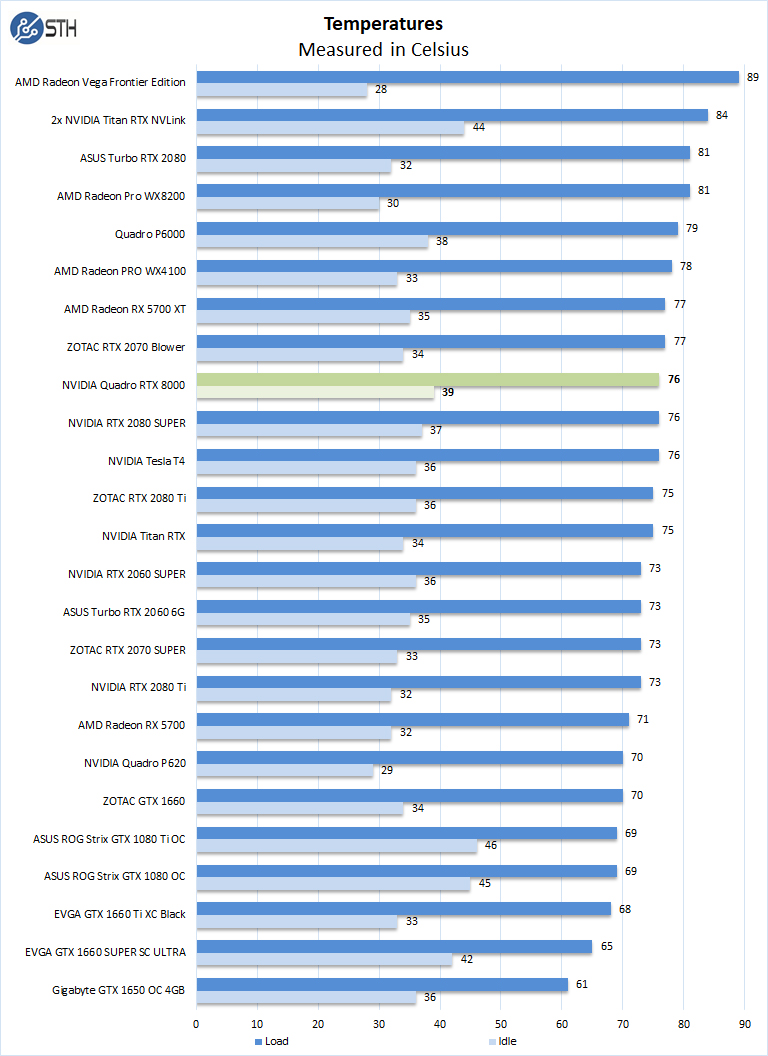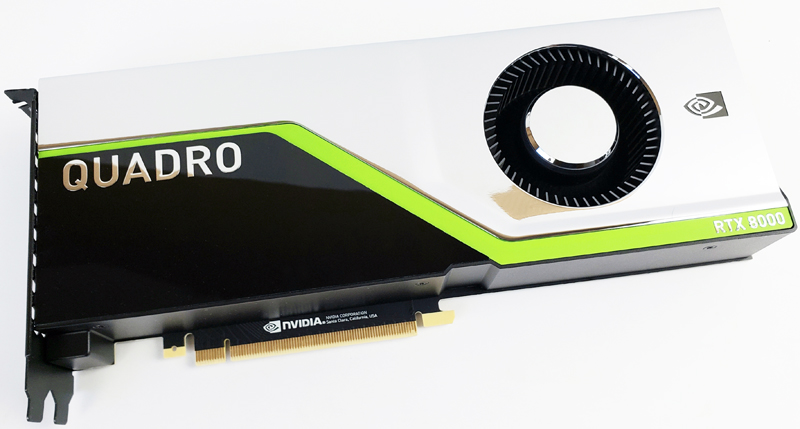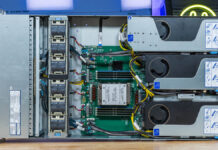NVIDIA Quadro RTX 8000 Power Consumption
For our power testing, we used AIDA64 to stress the NVIDIA Quadro RTX 8000, then HWiNFO to monitor power use and temperatures.

After the stress test has ramped up the NVIDIA Quadro RTX 8000, we see it tops out at 290Watts under full load and 18Watts at idle. That is within spec. It is also a lot for a GPU, but no other GPU on this list has as much compute and memory as the Quadro.
Cooling Performance
A key reason that we started this series was to answer the cooling question. Blower-style coolers have different capabilities than some of the large dual and triple fan gaming cards. In the case of the NVIDIA Quadro RTX 8000 which uses a blower fan, temperatures will vary depending on server cooling configurations.

Temperatures for the NVIDIA Quadro RTX 8000 ran at 76C under full loads, in this case, the highest temperatures we saw were achieved while running OctaneRender benchmarks. Idle temperatures were reasonable at 39C at idle which is 5C warmer than the Titan RTX and its dual-fans.
Final Words
We found the Quadro RTX 8000 to be extremely capable with our deep learning benchmarks as well on SPECviewperf 13. With 48GB of onboard memory and ability to scale to multi-GPU servers/ workstations this is an attractive option for many areas of the market. The Titan RTX is effectively limited to two cards in workstations while the Quadro RTX is designed to scale higher. An example is scaling to dense servers such as the NVIDIA RTX server which can house up to 8 Quadro RTX GPUs in a single box.
While we have relied heavily on a Titan RTX to Quadro RTX 8000 comparison, in many ways they do not compete. Professional applications are certified to run on Quadro but may not be on the Titan RTX making Quadro the only viable option. Further, the Quadro RTX’s ECC memory is mandated in certain industries.

Pricing for the Quadro RTX 8000 is $5,500 which is double and then some for a Titan RTX. For those industries that need certifications and ECC memory, the real competition from NVIDIA is the $4000 Quadro RTX 6000. Although we do not have one to test (yet) the Quadro RTX 6000 seems like it would be a great fit for those that do not need 48GB of memory. We expect that to be a trade-off of whether an incremental 24GB of ECC GDDR6 memory is worth $1500 to a company. Given the pricing of applications in this space, we suspect that is an easy upgrade to justify a segment of the market.
There is another aspect to the Quadro RTX 8000 which we need to address which is psychological. Getting a deep learning engineer the Quadro RTX 8000 to enable higher-memory workloads or the CAD user the card is a statement a company can make to its employees. Getting the Quadro RTX 8000 means a company is getting the best part available. Anything beyond this is a current state of technology limitation rather than the company opting to save $1500. If that $1500 leads to a job failing it can easily frustrate valuable engineers. As with any top-end product, this is an investment in the people using it as much as in the hardware itself.
Overall, the Quadro RTX 8000 has the top-end performance for a PCIe GPU. It has a massive (by today’s standards) 48GB of ECC GDDR6 memory and all of the application support a Quadro brand card brings with it.




I disagree with the closing statement, the real competition to this card when you don’t need the memory capacity but do need additional performance is a dual RTX5000 setup and not a single RTX6000. Other than that great article and overview of the RTX8000
For deep learning, or (most?) any machine learning, ECC RAM is unnecessary. 48GB is great though. The more the better.
What’s with the ‘stereo’ connector? Does this thing have an audio output too?
@zeta it’s for audio passthrough to a VR headset, same reason it has the USB-C connector on the back
Something appears to have gone wrong with the Octane benchmark. There is typically a really small difference between the 2080ti and the RTX 8000. Are we sure those are the correct results? :)
@Nejc The scene probably needs to address some out-of-core memory on 11GB VRAM cards which is not needed on RTX Titan & RTX 6000/8000
will this run fortnite?
Quadros would blow the doors off all these cards if they weren’t built for wait for it…. REDUNDANCY. Meaning ECC capabilities. Stop comparing Professional grade cards with basic consumer-grade cards. If you cannot comprehend what redundancy is or why it is needed on a Professional basis then you morons just need to learn to shut up. Quadros are not “gaming” cards. Idiots.